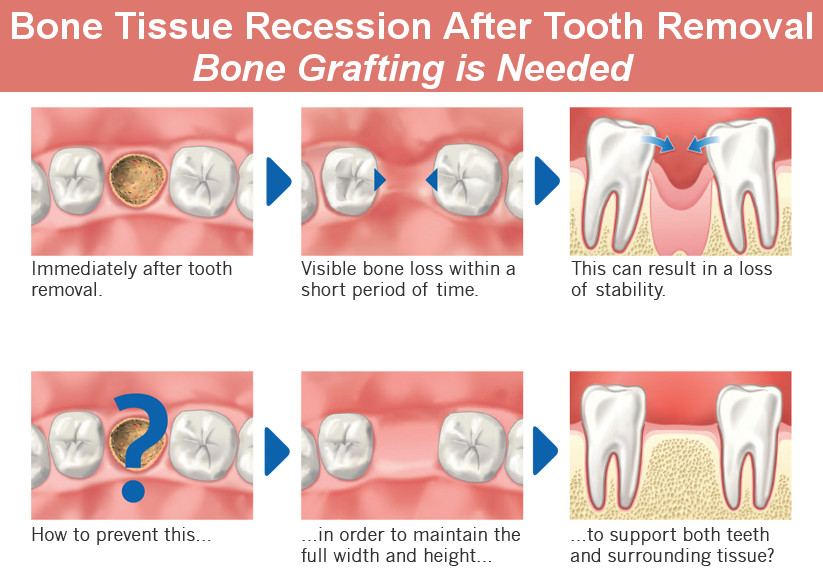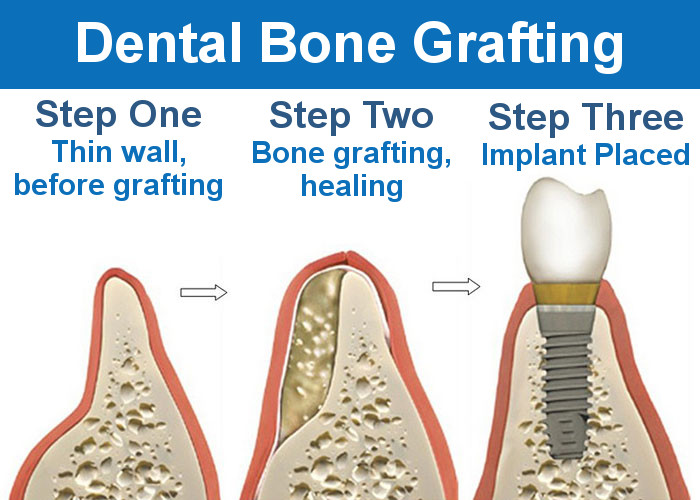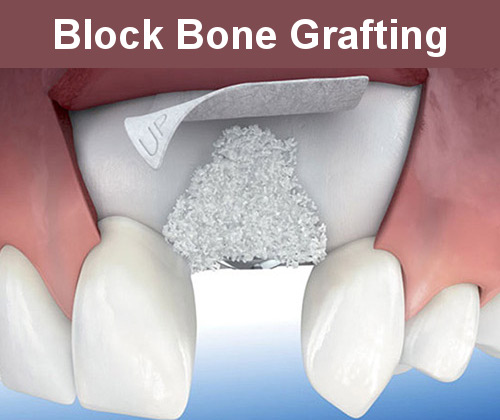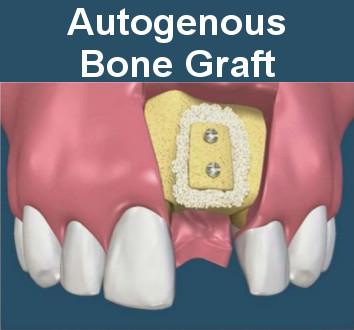Dentist Glendale: Bone Grafting Types, How and Why Is It Done

What is Bone Grafting and Why Is It Done?
Bone grafting is a dental surgical procedure. Very often bone grafting is closely connected with dental restorations. Bone grafting is done to the patients who need more bone to place dental implants or bridgework.
In many cases, the achievement of restoration procedure can depend on the growth, depth, and width of the jawbone at the implant site. When the jawbone has retreated a great damage, the implant cannot be supported on this unstable base and bone grafting is usually suggested for the subsequent restoration.
The bone grafting procedure is a great way to replace lost bone tissue and support natural bone growth. Dentist Glendale, Dr. Sahakyan is a well known for having numerous successful bone graft procedures. Call 1-818-578-2324 or contact us for a consultation or to schedule an appointment today.
What Causes Jaw Bone Loss?
There are many factors that affect jaw bone volume.
Factors that cause jaw bone loss except tooth removal include:
- Periodontal diseases,
- Jaw traumas,
- Dental infections.
Insufficient amount of bone tissue is not an insoluble problem. There are a large number of techniques to restore the missing volume. You can increase the height and width of the bone.
The complete restoration of missing bone volumes or adding to existing ones is very often crucial for the success of stabilization of the dental implant and its subsequent functioning.
Block Bone Grafting
 Most often, the block bone graft for dental implants is taken from the lower jaw in the area of growth of the third molars (wisdom teeth ). This area is called the jaw branch. An alternative site for obtaining bone blocks is the chin bone.
Most often, the block bone graft for dental implants is taken from the lower jaw in the area of growth of the third molars (wisdom teeth ). This area is called the jaw branch. An alternative site for obtaining bone blocks is the chin bone.
As a block, you can also use bone substitutes. They are natural and artificial. By natural means preparations obtained from animals and humans.
The procedure involves removing a small bone block about 1 square centimeter from the above areas and installing this block in the area of bone deficiency. Then the graft is fixed with one or two tiny screws and covered with bone particles of cattle and collagen membranes.
The site of operation is reliably closed and is given 4 months for engraftment of the block to the jawbone before an implant is inserted into this area.
Once the graft has been planted, it will not only become the implant’s home in the living bone, but it will also act as a support for soft gum tissue. Sometimes it is not necessary to restore large volumes of bone tissue, but it is necessary to strengthen it and make it more durable. Contact Smile Makeover of LA to schedule an appointment with the best dentist Glendale, Dr. Sahakyan who cares to listen and educate patients about dentistry.
What are The Types of Dental Bone Grafts

- Autograft – are those transplants that are taken from one area and placed in another area in the same patient. There is a (donor) zone on the lower jaw on its inner surface behind eight teeth, where the processes of bone formation are very high. If you cut out the bone block from this area for a transplant, then at this point the bone tissue should be completely restored within half a year. This block is placed in the desired area of the jaw to create a future needed volume. In extreme cases, bone tissue can be taken outside the oral cavity, the other sites of the patient’s body. The autograft is usually the best transplant and usually results in the greatest regeneration results. Dr. Sahakyan dentist Glendale usually recommends this type of bone grafting whenever possible.
- Allograft – Transplants from one individual to a genetically nonidentical individual of the same species are known as allografts or cadaver bone from a tissue bank. In many countries, there are donor programs in which a person can specifically indicate that in the event of death, parts that can save or improve the lives of others can be removed from his body. A heart transplant is an example of an allograft. Allografts are one of the greatest “gifts” a person can ever give. Bone obtained in this way is thoroughly tested and sterilized. The organism “turns” the donor bone into its own, thereby rebuilding the defect.
Allograft does not require an additional surgical procedure to extract bone from the patient, thereby reducing the risk of additional discomfort in the patient. - Xenografts – Transplants from one species to another are known as xenografts. The animal’s bone, most often a bull (cow), is specially processed to make it compatible and sterile. The material acts as a filler, which eventually replaces the missing bone. After completion of this replacement process, implants can be installed or bridgework can be done.
- Alloplastic materials.
The modern procedure of artificial joint replacement and implant replacement uses metal alloplastic transplants. These grafts are synthetic, chemically produced. For alloplastic bone replacement, the material produced mimics the natural bone. Most often the material used for making alloplastic graft is calcium phosphate. Dr. Sahakyan: the best dentist Glendale is an expert in surgical dentistry, bone grafting. To make an appointment fill out the online form or call 1-818-578-2324.
How is Bone Grafting Performed?

In the absence of conditions for dental implantation, the doctor decides to perform augmentation or bone tissue growth. Also, bone grafting is not recommended for patients with diabetes, Considerable alcohol use, and smoking.
- Having agreed with the patient the amount of work done, the doctor makes anesthesia, incision, exfoliates the mucous membrane, lays the bone material, imposes a special collagen membrane and brings the edges of the wound together, applying seams.
- Then he gives recommendations for care, prescribes medicines.
The patient must be observed with the doctor within four months after the operation. If the procedure is successful and there are no complications, the dental implant can be placed.
To get any type of bone grafting consultation from the best dentist in Glendale, Dr. Sahakyan at Smile Makeover of LA. Call 1-818-578-2324 or contact us to schedule an appointment today.
